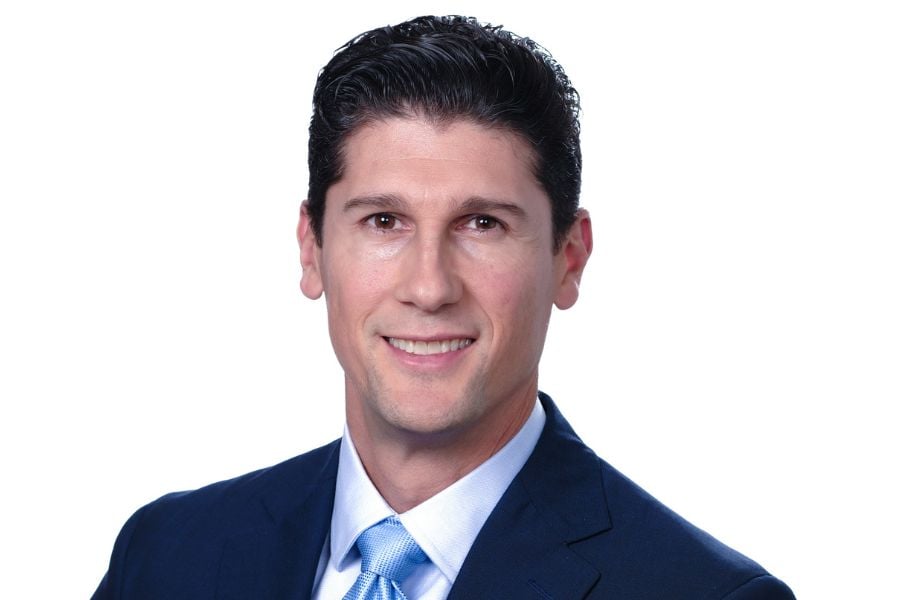

No matter your thoughts on it, private credit is here to stay.
Miguel Sosa, head of market research and strategy at alternative asset manager Bluerock, thinks there are strong reasons investors should be narrowing in on private credit, especially in the next five years.
Over that time period, private credit is projected to outpace stocks, bonds, and the 60/40 portfolio Sosa says. Given the relative valuations, private credit should outperform asset classes in that five-year timespan whose valuations might be stretched relative to historical averages.
“The appeal of private credit is caused by this fundamental shift that we've seen in equities markets and in fixed-income markets, really driven by the fundamental shift in monetary policy,” he explains. “If we look at the 2010s, that entire decade was an ideal period for equities markets, because interest rates were at zero, and were close to zero for an extended period of time. That low financing cost benefited equity investors. With such low interest rates, credit investors weren’t generating as much returns.”
The tables have turned more recently, Sosa notes, since with higher interest rates, the credit market becomes much more appealing.
In addition, equities potentially face a more challenging environment because of higher borrowing costs, which he says will be what “differentiates the good performers from bad performers.
“In other words, the capital owners are lending out capital to the lenders versus the borrower. So it's a very, very attractive backdrop,” Sosa says.
Another type of investment investors should be considering is senior secured loans, Sosa said, as they offer better exposure for income investors given higher yields and their lower correlation to broader markets.
“Senior secured loans are senior in a company's capital stack,” he says. “That means that they are paid first and have higher priority over all other fixed-income issuances, or investors in that particular company … SSLs have priority in cash flows that the company produces so they get paid first. They're also secured by collateral.”
Unlike bond or mezzanine investors, the documentation for senior secured loans states that there is specific collateral, Sosa added. In case a loan does default, there’s that level of protection for investors.
Senior secured loans also have a floating rate.
“That has been very beneficial in this rising rate environment because typically every quarter, they've adjusted at a higher rate,” he said. “Secured loans in the last few years have significantly outperformed all other fixed-income asset classes, in part driven by these characteristics.”
The way to invest in these loans is through collateralized loan obligations. Acting as a parallel to banks, CLOs purchase SSLs to create a diversified loan portfolio, offering various layers of capital to investors. This structure enables investors to tailor their risk tolerance, with higher yields for those who are confident in the loans' performance.
“The important aspect of why banks are successful is that essentially they will pay us, the depositors, less in interest rate and in yield than what they charge [for] their mortgage and business loans,” Sosa says.
“If we take that example, and port it over to a CLO, a CLO works by 'lending' capital to senior secured loans, so instead of those homeowners and those business loans, you have SSLs. Those SSLs will pay a certain interest rate and will pay it to the CLO.”
Replacing the depositor category in his example, Sosa explains, are CLO investors. CLO investors will also receive different interest rates, just as a checking account will receive a lower interest rate than a savings account. A CLO investor can then decide which category or tranche to invest in, which will give them a certain interest rate.
“Depending [on the tranche], you can receive interest rates for yields of around 5 percent upwards of 12 percent for debt investments, and the final tranche, the subordinate tranche, can receive upwards of 15 percent yields,” he said. “There's a very wide spectrum of yields that investors can select and the risks relative to the yields are also very attractive, in our view.”
Reasons why investors might want to invest in the vehicle, Sosa says, is that CLOs aren’t long-term investment vehicles, but rather, they're structured in such a way to account for both economic expansions and recessions.
To protect all CLO investors, a default rate is assumed throughout a 10-year period, which “typically accounts for periods of market optimism, but also enough cushion for periods of recession,” he said.
Other reasons are the attractive distribution rates, adjustments in the interest-rate environment, and the diversification the structure offers. After all, each CLO has exposure to about 150 to 200 individual senior secured loans, Sosa says. “Not only that, they're also extremely diversified by requirements across different industries, across different ratings, and so there is no concentrated exposure to health care or to the technology sector if there happens to be a sell-off in one of those sectors.
“We think it continues to be an attractive asset class, even if interest rates start to decline because of the high interest rate that they generate and the high total return potential that they have given the historical low default rate,” he said.

Former Northwestern Mutual advisors join firm for independence.

Executives from LPL Financial, Cresset Partners hired for key roles.

Geopolitical tension has been managed well by the markets.

December cut is still a possiblity.

Canada, China among nations to react to president-elect's comments.
Streamline your outreach with Aidentified's AI-driven solutions
This season’s market volatility: Positioning for rate relief, income growth and the AI rebound
